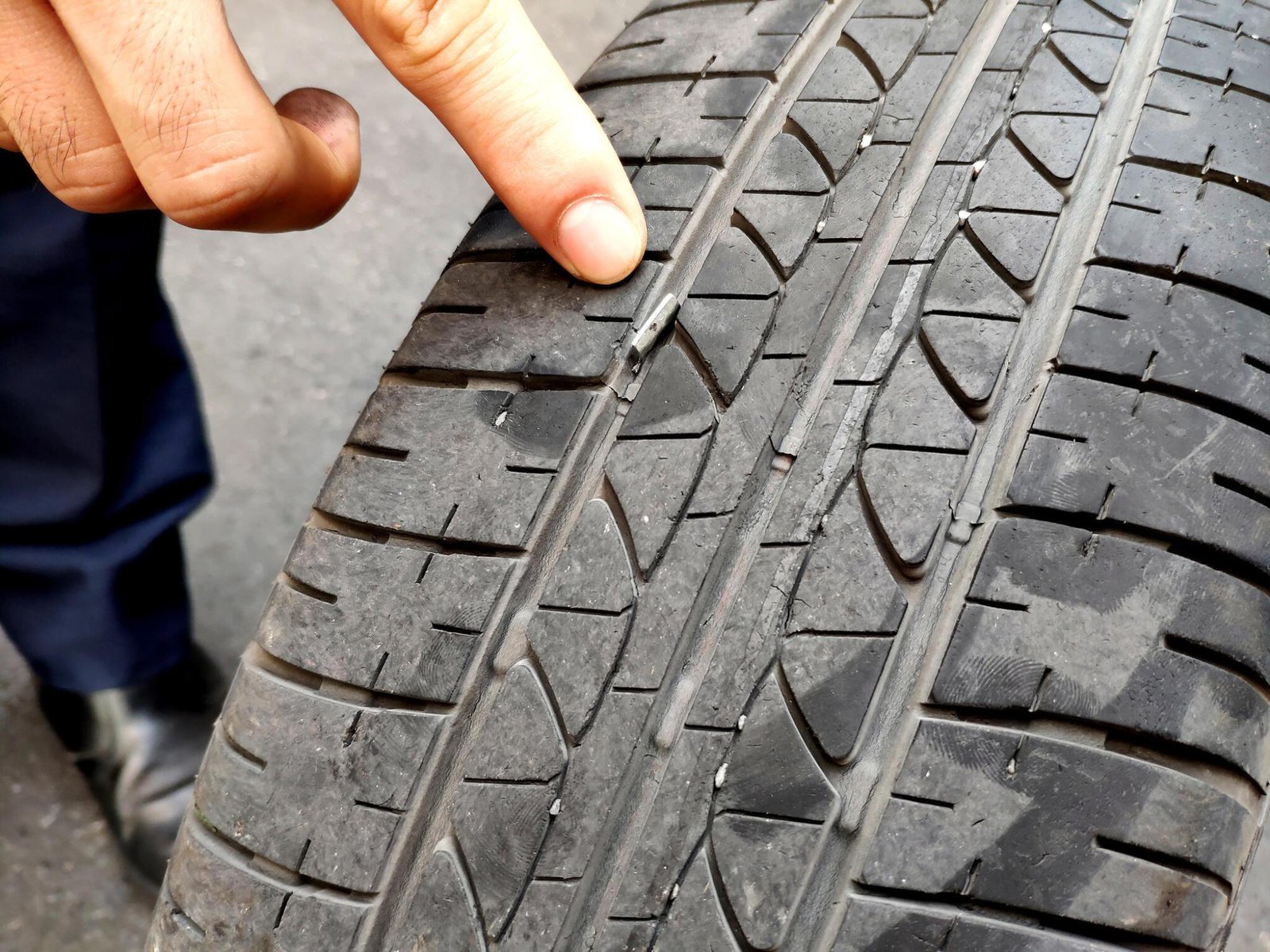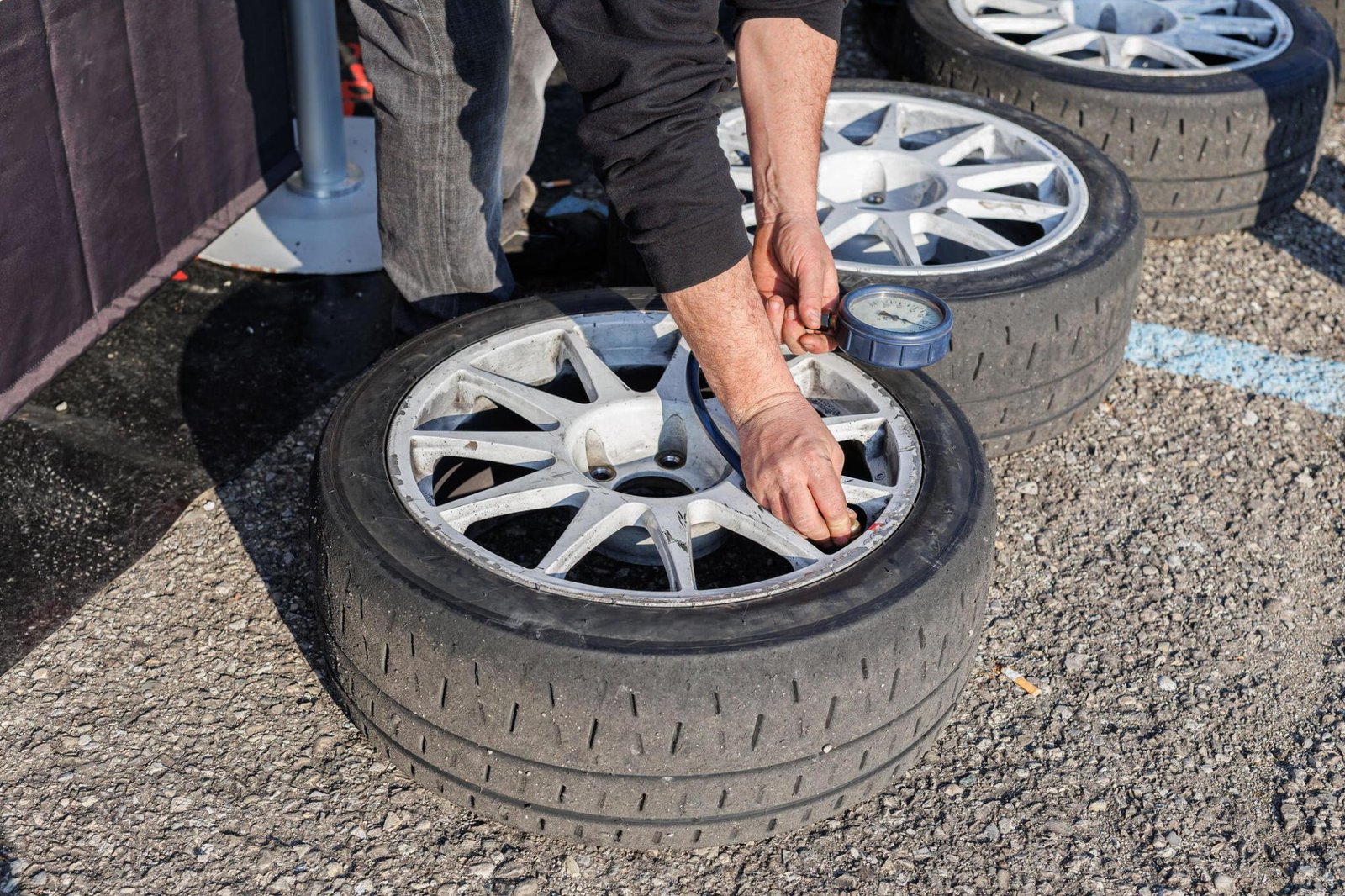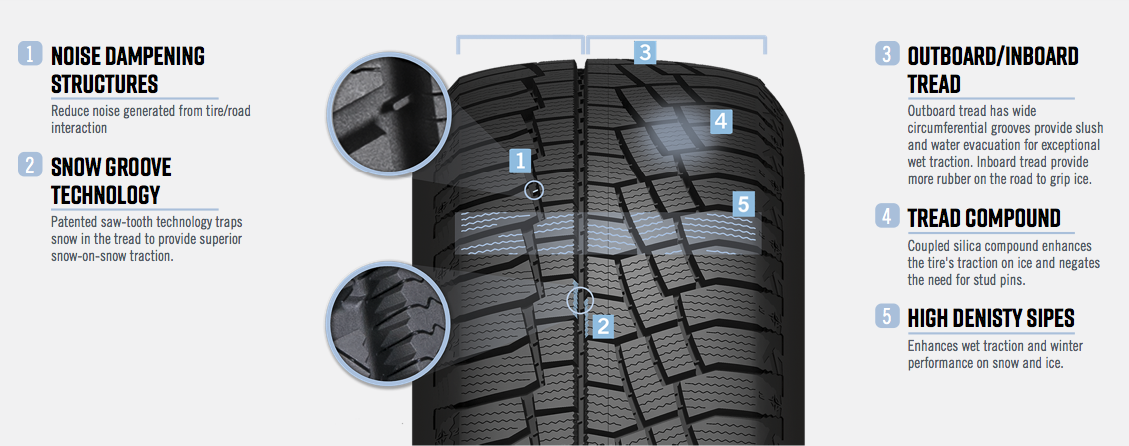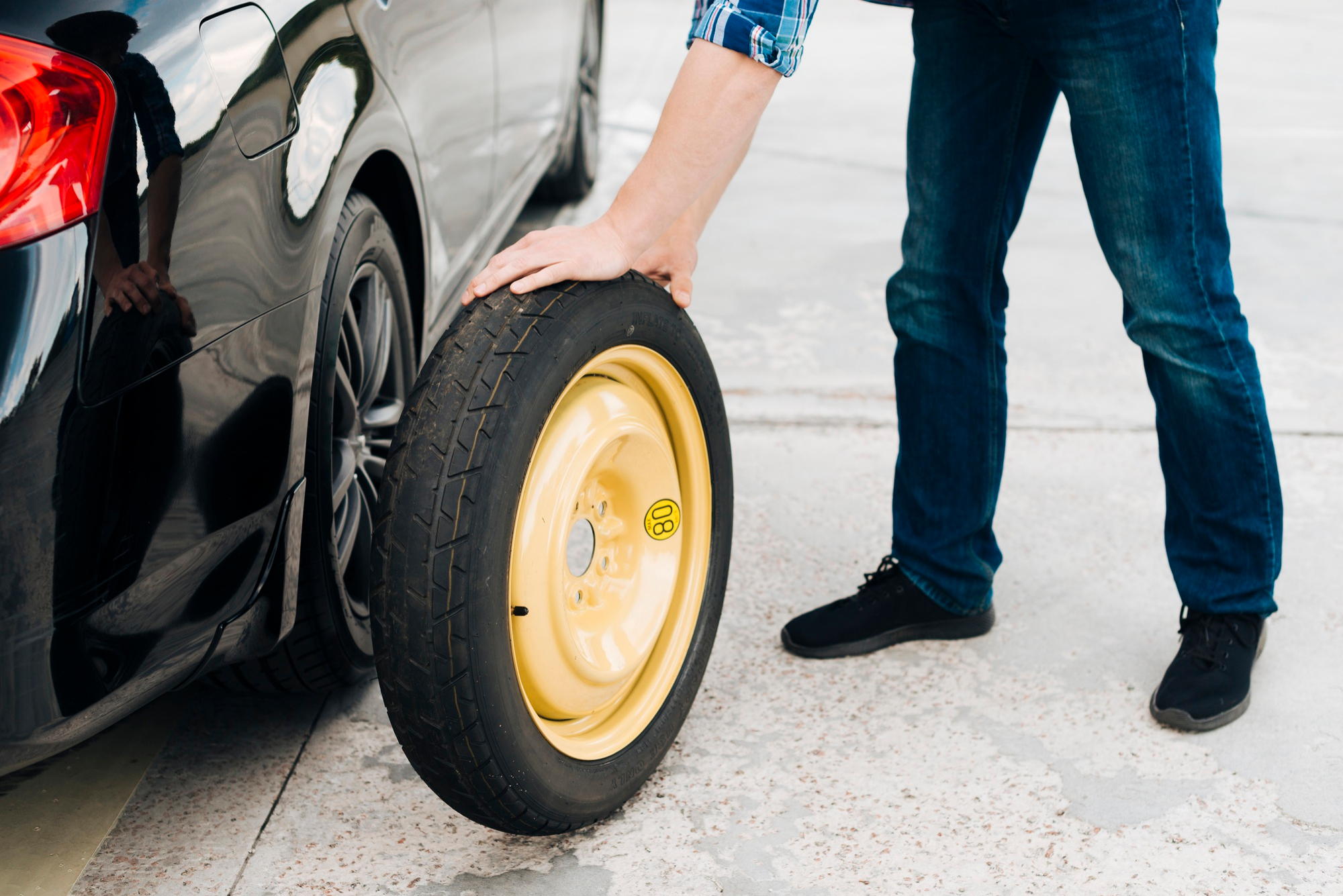Last Updated on April 22, 2024
Navigating the Technology That Keeps You Rolling
Run-flat tires are a crucial innovation in vehicle technology that improves driver safety and convenience. They are intended to keep a vehicle moving despite decreasing air pressure due to a puncture or cut, considerably lowering the chance of flat tires. This technology enables drivers to continue their journey without requiring rapid tire replacement or repair, which is especially useful in locations where immediate roadside help is unavailable.
Overview of Run-Flat Tire Technology
The primary characteristic of run-flat tires is their ability to support the vehicle’s weight even after air loss. This capability is achieved through one of several distinct designs:
- Self-Supporting: The most common kind of run-flat tire technology has reinforced sidewalls. These sidewalls are strong enough to support the vehicle’s weight even when the tire is deflated. This design allows the car to go approximately 50 miles at a decreased speed of up to 50 mph.
- Self-Sealing: These tires contain an inner lining that automatically seals minor punctures in the tread reg on. While they can survive some punctures, more significant cuts or sidewall damage require rapid treatment.
- Auxiliary Supported: This system has an auxiliary support ring attached to the wheel to maintain the vehicle’s weight if the tire loses it. This design is less frequent and is usually found in military and specialty vehicles.
Run-flat tires are special ones that can keep going even if punctured. But there’s another part to this system: a sensor in your car that tells you if a tire is losing air. This way, you’ll always know what’s happening with your tires and can pull over safely.

Brief History of Run-Flat Tires
Run-flat tires aren’t a new thing. They’ve been around since the 1930s but only became popular in the 1980s and 19 0s. One of the earliest commercial applications of run-flat tire technology was by Michelin in the late 19 0s. However, the technology became more widely recognized in the 1980s, thanks to materials and automotive design advances. BMW and Mini were among the first car manufacturers to offer run-flat tires as standard or optional equipment on their vehicles in the early 20 0s. Since then, many other manufacturers have followed suit, recognizing run-flat tires’ safety and convenience benefits.
Run-flat tires were invented to make driving safer and eas easier. They let you keep going for a bit, even if you get a flat tire, so you don’t have to change it on the side of the road. Ad. Road tires are becoming more common, especially in fancy cars, because the technology is getting better and cheaper.
Understanding Run-Flat Tires
This article explains all about tires, which are special tires that can keep rolling even if they get a flat tire. Tireless tires go flat immediately, but run-flat tires are more rigid and can hold up for a short while. This allows you to drive to a safe spot or repair shop instead of getting stuck on the side of the road! Roads are neat inventions that make driving more convenient.
What Are Run-Flat Tires?
Run-flat tires are special tires that can keep going for a short while, even if they get f at. This is different from regular tires that go flat right away. Away flat tires are helpful because you can drive them to a safe spot instead of changing them on the side of the road. The primary function of run-flat tires is to provide safety and convenience. They are designed to handle the loss of air pressure by supporting the vehicle’s weight and maintaining control and stabilizability capability, allowing drivers to continue driving to a safe location or a service station and eliminating the immediate need for roadside tire changes.
Key Features and Design Elements
Key Features and Design Elements of Run-Flat Tires explores the innovative technology behind run-flat tires, shedding more light on the essential features and design elements that set them apart from standard tires. Tires increased sidewalls to self-supporting structures and heat-resistant design; this article delves into the engineering that allows run-flat tires to keep you on the road even after a punch re. Whether you are contemplating these tires for your car or are simply interested in their capabilities, this guide will give you vital information regarding their safety and convenience in demanding situations.
- Reinforced Sidewalls: The most crucial aspect of run-flat tires is their strengthened sidewall. Sidewalls are constructed from more demanding and resilient materials than standard ties. Tire reinforcement is intended to support the vehicle’s weight even when the tire is deflated, keeping the tire from collapsing and allowing the automobile to continue going.
- Self-Supporting Structure: This design feature is essential to preserving the tire’s form and integrity following a puncture. The self-supporting construction ensures that the tire can hold the vehicle’s weight even without air pressure.
- Heat-Resistant Construction: As a tire loses air, the risk of overheating rises due to increased friction. Flat tires are made of more heat-resistant materials, which reduces the possibility of tire failure due to overheating during a flat tire situation.
- Specialized Bead Design: The bead area of a run-flat tire—the part of the tire that sits on the wheel rim—is often specially designed to ensure the tire remains securely fixed to the rim even when deflated. This design prevents the tire from coming off the wheel, a common problem with deflated standard tires.
- Tire Pressure Monitoring System (T.P.M.S.) Compatibility: Run-flat tires are usually used with a T.M.S. This system informs the driver of a massive drop in tire pressure, allowing them to be aware of the situation and take the right action.
- Limited Range and Speed Capabilities: Run-flat tires are great but aren’t magic! You can drive on them for a bit after a flat, but not forever. They will only get you about 50 miles at slower speeds, like 50 pH. It’s always best to repair a flat, run-flat tire as soon as possible.
Run-flat tires are like superheroes for your car! They can keep going even if they get a flat tire. Tire means you can drive safely to a repair shop instead of being stuck on the side of the road. They do more than regular tires, and while it might not be the smoothest ride, they make driving safer and give you peace of mind. I wonder if they’re getting more popular!
Types of Run-Flat Tire Technologies
Run-flat tires are a fantastic invention that can help you out of an am! They come in a few different styles, all designed to keep you rolling even if you get a flat tire. You can drive safely to a repair shop without being stuck on the side of the road. There are three main tire types: supporting, self-sealing, and auxiliary-supported. We’ll explore how each one works a little later.
Self-Supporting Tires
Self-supporting tires are the most widely used type of run-flat tire technology. These tires have reinforced sidewalls, which are much stronger and more rigid than ordinary tires. One-supporting tires must keep their shape and sustain the vehicle’s weight even after losing all air pressure.
- Design: The strengthened sidewalls are made of firm, solid, and resistant materials to keep the tire from collapsing when deflated. This design enables the tire to carry the vehicle’s load without air pressure.
- Performance: In the case of a puncture, self-supporting tires allow the vehicle to continue driving at a reduced speed—generally up to 50 miles per hour—for a restricted distance of roughly 50 miles. This feature allows the driver enough time to reach a service station or a safe stopping location.
Self-Sealing Tires
Self-sealing run-flat tires incorporate a different approach to handling punctures. These tires are designed with a particular layer of sealing material on the inside of the tire tread.
- Mechanism: When a puncture occurs, the sealing material pours into and closes the hole left by the nail or puncturing object nearly immediately after it is removed. This process efficiently plugs the puncture and prevents air from escaping.
- Limitations: Self-sealing tires can efficiently manage small punctures in the tread region but are not designed to handle bigger punctures or sidewall dam damage if the puncturing object remains in the tire, the sealant may fail to close the hole properly.
Auxiliary Supported System
The auxiliary supported system, also known as the support ring system, is a run-flat technology that involves an additional support structure within the tire.
- Structure: This system uses a rigid ring attached to or inside the wheel. If a tire loses air pressure, this ring provides the necessary support to prevent the tire from collapsing.
- Application: Auxiliary-supported systems are less common in passenger vehicles and are more often found in certain high-performance cars, military vehicles, and other specialized applications.
- Advantages and Disadvantages: One of the main benefits of this system is that it can support the vehicle for longer distances compared to self-supporting tires, albeit still at a reduced speed; the added weight and complexity of the support ring can impact the vehicle’s fuel efficiency and ride comfort.
Each type of run-flat tire technology offers unique benefits and has specific uses. Case-supporting tires are widely used due to their balance of performance and comfort. Comfort-sealing tires provide an excellent solution for small punctures, although they have limitations with more extensive damages.
Benefits of Run-Flat Tires
Run-flat tires are a game-changing breakthrough in automobile safety. Convenience tires are intended to keep a vehicle moving even after a puncture, significantly decreasing the risk and inconvenience associated with traditional tire blows. The advantages of run-flat tires go beyond being able to drive on a flat; they improve overall safety, provide exceptional ease during a puncture, and uniquely affect vehicle performance.
Enhanced Safety on the Road
One of the primary benefits of run-flat tires is their increased safety. Traditional flat tires can lead to dangerous situations, especially at high speeds or on busy roads.
- Prevention of Blowouts: Run-flat tires significantly reduce the risk of blowouts. The reinforced sidewalls are designed to support the vehicle even when the tire loses air pressure, preventing the tire from suddenly collapsing.
- Stability in Emergencies: In case of a puncture, run-flat tires maintain better stability and control than standard tires. Tire stability is crucial for preventing accidents, especially when traveling at high speeds or in heavy traffic.
- Avoiding Roadside Hazards: Changing a tire on the side of a busy road can be dangerous for us. With run-flat tires, drivers can safely continue to a more secure location to address the tire issue.
Convenience During a Puncture
The convenience offered by run-flat tires during a puncture is a significant advantage, especially in areas where immediate roadside assistance may not be available.
- Continued Mobility: After a puncture, run-flat tires allow the vehicle to continue driving for a certain distance (usually around 50 miles) and at a reduced speed (up to about 50 mph), enabling the driver to reach a safe location or a service center.
- Eliminating Spare Tire Need: Run-flat tires eliminate the need to carry a spare tire, jack, and other tire-changing to ls. Tools free up space in the vehicle and reduce the first, potentially improving fuel efficiency.
Impact on Vehicle Performance
Run-flat tires also have a distinct impact on vehicle performance, both positive and negative.
- Ride Quality: Due to their reinforced structure, run-flat tires can sometimes have a firmer ride than standard tires. However, many modern run-flat tires are designed to minimize this difference, offering a comfortable driving experience.
- Handling and Stability: The stiffer sidewalls of run-flat tires can improve the vehicle’s handling and stability, particularly in corners and at high speeds.
- Weight Considerations: Run-flat tires are generally heavier than standard tires due to the extra material in the sidewall ls. This can affect the vehicle’s fuel economy and acceleration.
Run-flat tires offer significant safety and convenience benefits. They enhance the driver’s and passengers’ safety by preventing sudden blowouts and maintaining stability. They also provide considerable convenience by eliminating the need for immediate tire changes. While there are some considerations regarding ride comfort and vehicle performance, the overall benefits of run-flat tires make them a valuable feature for modern vehicles.
Challenges and Considerations of Run-Flat Tires
While run-flat tires offer undeniable benefits, like enhanced safety and convenience, they also come with challenges, and considering these aspects is crucial for anyone considering run-flat tires for their vehicle. The article explores the cost comparison with standard tires, the impacts on ride comfort and handling, and run-flat tires’ limitations and care requirements.
Cost Comparison with Standard Tires
One of the primary considerations for many consumers is the cost difference between run-flat tires and standard tires.
- Initial Purchase Price: Run-flat tires are often more expensive than regular tires. This is due to the advanced technology and materials needed for their construction. Differences can be significant, depending on the tire brand and characteristics.
- Replacement Costs: Aside From a higher initial purchase price, run-flat tires may have a shorter lifespan than traditional tires due to their stiffer design, requiring more frequent replacement issues may contribute to increased long-term costs.
- Limited Repair Options: Unlike regular tires, which can typically be patched, run-flat tires are frequently not repairable after a puncture. A ruptured run-flat tire often demands a complete replacement, increasing the overall cost.
Ride Comfort and Handling
The design of run-flat tires affects the vehicle’s ride comfort and handling, both positive and negative.
- Ride Comfort: Due to their strengthened sidewalls, run-flat tires are often harsher than conventional tires. Tires’ rigidity can result in a rougher ride because the tires absorb less stress from road irregularities; many current vehicles with run-flat tires are mainly used to reduce this effect.
- Handling: Run-flat tires’ firmer sidewalls can improve handling and stability, especially during cornering and high ds. This stiffness can help provide a more responsive driving experience.
Limitations and Care
Run-flat tires come with certain limitations and require specific care practices.
- Distance and Speed Limitations: After a puncture, run-flat tires can only be driven for a short distance (typically around 50 miles) and at reduced speeds (usually up to 50 m h). Exceeding these limits can cause irreparable damage to the tire and, potentially, the wheel.
- Tire Pressure Monitoring System (T.P.M.S.): Vehicles with run-flat tires must always have a working T.P.M.S. This device is crucial for notifying the driver of a decrease in tire pressure, which may not be immediately apparent due to the nature of run-flat tires.
- Regular Inspections: Because run-flat tires can hide the sensation of a flat tire, they should be inspected regularly for damage, wear, and inflation.
Installation and Maintenance
Run-flat tires, with their unique ability to work even after a puncture, are a new choice for improving vehicle safety and convenience; choosing the right run-flat tires for your car, understanding the installation process, and following proper maintenance practices are essential for reaping the benefits article delves into these important factors, leading you through the selection, installation, and maintenance of run-flat tires.
Choosing the Right Run-Flat Tires for Your Vehicle
Selecting the appropriate run-flat tires involves several considerations to ensure compatibility and performance:
- Vehicle Compatibility: Not all cars are appropriate for run-flat tires. It is essential to review the car manufacturer’s guidelines. Some vehicles may have specialized needs, particularly those constructed with run-flat tires as standard equipment.
- Size and Specification: Make sure the tire size and specs match those advised for your vehicle. This information is usually included in the vehicle’s manual or an inscription in the driver’s door jamb.
- Driving Needs: Consider your usual driving situations, and the new D.S. Different run-flat tires provide varying degrees of performance, durability, and comfy comfort. Some are intended for high-performance automobiles, while others prioritize comfort.
- Brand and Quality: Choose reputable companies that provide high-quality run-flat ties. Researching consumer reviews and professional evaluations will help you make an informed decision.
Installation Process
The installation of run-flat tires is a task that should be handled by professionals due to the specific requirements and tools needed:
- Professional Installation: Because of the unusual construction of run-flat tires, particularly the rigid sidewalls, installation requires specialized equipment and knowledge. It would be best if you got them installed at a competent tire shop or dealership.
- T.P.M.S. Reset: After installing new run-flat tires, the Tire Pressure Monitoring System (T.P.M.S.) should be checked and reset if necessary to ensure that it accurately monitors tire pressure.
- Wheel Alignment Check: It’s advisable to have a wheel alignment check when installing new tires. Tire alignment ensures even tire wear and proper handling.
Maintenance Tips and Best Practices
Regular maintenance is import essential in tending the life of run-flat tires and ensuring they perform as expected:
- Regular Inspection: Inspect the tires for signs of wear, damage, or embedded ms. Although run-flat tires may withstand punctures, they are not resistant to damage.
- Tire Pressure Checks: Check the tire pressure regularly to ensure it is within the manufacturer’s recommended range. Ranger inflation is required for run-flat tires to function correctly and last longer.
- Rotation Schedule: Follow a regular tire rotation schedule to ensure even wear. The wear frequency of rotation differs depending on vehicle type and driving behavior.
- Avoid Exceeding Limits: Be aware of the restrictions of runlet tires, particularly the distance and speed limits following a puncture. These limitations can cause irreversible tire damage.
- Replacement Considerations: If a run-flat tire is punctured and driven on while flat, it is usually best to replace it rather than fix it. Always visit a tire professional to determine the tire’s condition.
Proper use of run-flat tires requires selecting the right tires for your vehicle, having them professionally installed, and adhering to strict maintenance measures. Proper maintenance and regular inspections will increase the life of your run-flat tires and ensure they deliver the safety and convenience benefits they are intended for.

Real-World Applications
Run-flat tires have been used in several vehicle applications, benefiting from their unique ability to preserve mobility even after a puncture. They are essential in various applications, including ordinary, high-performance, luxury, emergency, and military vehicles. This article investigates the numerous real-world applications of run-flat tires, emphasizing their importance in various vehicle types.
Run-Flat Tires in Everyday Vehicles
In everyday vehicles, the primary advantage of run-flat tires is enhanced safety and convenience for average drivers.
- Safety in Common Road Incidents: Run-flat tires offer protection for regular commuting or family trips. In the event of a tire puncture, they allow the driver to maintain control and drive to a safer location instead of stopping on the roadside.
- Space and Weight Savings: Run-flat tires eliminate the need for a spare tire, jack, and tools, freeing up cargo space and reducing the vehicle’s weight, potentially leading to better fuel efficiency.
- Growing Popularity: As the technology becomes more accessible and affordable, many mainstream vehicle manufacturers offer run-flat tires as standard or optional equipment, recognizing their benefits for everyday use.
Specialized Use in High-Performance and Luxury Cars
Run-flat tires are top-rated in high-performance and luxury car categories, where they complement the vehicles’ advanced features.
- Performance Benefits: Run-flat tires improve handling and stability in high-performance vehicles, which are essential to vehicles with faster speeds and more dynamic driving.
- Luxury and Convenience: Run-flat tires are popular among luxury automobile owners because they provide convenience and peace of mind. Avoiding immediate tire changes is consistent with the premium comfort ideal and uninterrupted travel.
- Custom Solutions: Many high-performance and luxury vehicles have run-flat tires tailored to their handling characteristics, which provide top efficiency and ride quality.
Emergency and Military Vehicle Applications
Run-flat tires are also extensively used in emergency and military vehicles, where their ability to maintain mobility can be critical.
- Emergency Vehicles: For ambulances, police cars, and fire trucks, the ability to keep moving after a tire incident is vi al. Run-flat tires ensure these vehicles can reach their destination or return to safety even in adverse situations.
- Military Use: In military applications, run-flat tires are crucial for the safe and effective operation of vehicles in combat zones. Zonestires are often designed to withstand punctures and more significant damage, ensuring that military vehicles remain mobile in challenging environments.
- Advanced Technologies: Military run-flat tires often include more durable features, such as self-sealing capabilities and auxiliary support systems, to withstand harsh conditions and larger vehicle weights.
Run-flat tires are widely used in the automotive industry, with specific advantages in each category. They are now crucial in modern vehicle design and operation, whether for daily commuting, improving the performance and luxury of premium vehicles, or providing critical reliability in emergency and wartime situations. Continuing development and integration reflect the car industry’s rising focus on safety, convenience, and performance.
The Future of Run-Flat Tires
The run-flat tire industry has grown significantly in recent years, owing to advances in tire technology and a greater emphasis on vehicle safety moving into the future; this industry is positioned for additional innovation and expansion, with sustainability and environmental concerns playing an important role. Role article investigates the future of run-flat tires, including technological improvements, environmental impact, and market trends.
Innovations and Technological Advancements
The future of run-flat tires is closely tied to ongoing technological innovations, which aim to address current limitations and expand their capabilities.
- Improved Comfort and Performance: One key aim is to improve the ride comfort of run-flat ties. Manufacturers are exploring materials and designs to reduce stiffness and enhance ride quality without sacrificing safety.
- Advanced Materials: The discovery of new, lighter, more durable materials could result in run-flat tires that are more fuel efficient and last longer, addressing two significant issues with existing models.
- Innovative tire Technology: Another area of development is the integration of sensors and intelligent technological developments, which could enable real-time monitoring of tire problems, predictive maintenance notifications, and improved overall vehicle safety.
- Self-Repairing Technologies: Research into self-healing materials can potentially change run-flat ties. Tires. Tiresself-sufficiently mending minor punctures and cuts would considerably improve tire longevity and reliability.
Environmental Impact and Sustainability
Like all automobile technology, run-flat tires are studied to determine their environmental impact.
- Reduced Raw Material Use: Future run-flat tires may use less material in their construction, lowering the environmental impact of manufacturing.
- Recycling and Reusability: Efforts are being made to make run-flat tires more recyclable. How these tires are processed at the end of their life could reduce their environmental impact.
- Eco-Friendly Materials: The use of sustainable materials in tire production is increasing. Biodegradable substances and recyclable materials are being investigated to lessen environmental effects.
Predictions for Market Growth and Trends
The run-flat tire market is expected to grow, influenced by various industry trends and consumer preferences.
- Increased Adoption of Electric Cars: As electric cars (E.V.s) become more common, demand for run-flat tires will likely increase. Their capacity to save space and weight by eliminating the need for a spare tire is beneficial for electric vehicles, where efficiency and space use are essential.
- Broader O.E.M. Integration: More automotive manufacturers are projected to offer run-flat tires as standard equipment, particularly in the premium and luxury categories, driving market development.
- Consumer Safety Awareness: As people become more aware of the importance of vehicle safety, they are more inclined to choose run-flat tires because they recognize their benefits in an emergency.
- Global Expansion: As vehicle norms and consumer tastes shift, emerging markets will likely contribute to growth in the run-flat tire segment.
Conclusion & Recommendations
As we complete our comprehensive introduction to run-flat tires, it is evident that this technology has significantly impacted vehicle safety and convenience. In this final segment, we’ll cover the benefits of run-flat tires and discuss the future of tire technology, followed by a recommendation for anyone wanting to buy their next set of tires.
Recap of Run-Flat Tire Advantages
Run-flat tires have several advantages that make them an enticing option for many drivers:
- Enhanced Safety: Perhaps the most recognized benefit is increased safety. Flat tires considerably minimize the danger of an accident because they maintain control and stability even when punctured.
- Convenience: It is highly convenient to continue driving even after a tire loses air pressure, particularly when changing a tire is impractical or risky.
- Space and Weight Savings: Eliminating the need for a spare tire frees up space and reduces the vehicle’s overall weight, which may improve fuel efficiency.
- Peace of Mind: Knowing that drivers may safely arrive at their destination even after a tire puncture provides tremendous peace of mind.

Final Thoughts on the Future of Tire Technology
In terms of tire technology, run-flat tires, in particular, have a promising future. As long as continuous improvements are made to comfort, environmental friendliness, and novel features, run-flat tires that provide safety and support efficiency and sustainability in more extensive measures should become an objective reality. Tires are becoming increasingly flexible, and their combination with electric vehicles suggests that run-flat technology will soon be the norm rather than an alternative.
Why choose Tire Easy?
For those inspired by the advantages and future potential of run-flat tires and looking to make their next purchase, Tire Easy offers a wide selection of options to fit your specific vehicle needs. Whether you’re searching for tires that prioritize safety, performance, or comfort, Tire Easy has a range of run-flat tires from leading manufacturers.
Explore our extensive collection of run-flat tires and find the perfect match for your vehicle. Our easy-to-navigate website allows you to browse, compare effortlessly, and purchase tires that meet your preferences and requirements. Head over to Tire Easy now and equip your vehicle with the safety and reliability of run-flat tires.
F.A.Q.s
What technology is involved in run-flat tires?
Run-flat tires are made to withstand air pressure loss by having strengthened sidewalls or extra internal supports that help them hold the car’s weight. Because of this reinforcement, even after the tire is deflated, it can still be driven for a short distance.
Drive on run-flat tires: how do you do it?
When using run-flat tires, it’s essential to follow the manufacturer’s instructions, which typically dictate that you should not drive faster than 50 mph and that you should not go farther than a certain distance (often roughly 50 miles) after a punt puncture, also essential to do routine tire pressure checks and adhere to the vehicle’s prescribed maintenance schedule.
What are run-flat tires, and describe how they function?
Run-flat tires are specialized tires that can continue to operate for a limited distance after losing air pressure due to a punch re. They rely on strengthened sidewalls or internal support systems that hold up the tire and maintain vehicle mobility even when flat.
What are the benefits of run-flat tires?
The benefits of run-flat tires include better safety by reducing the risk of accidents from sudden tire deflators, the convenience of not needing immediate tire changes, eliminating the need for a spare tire, freeing up space, and reducing vehicle weight.
What is a run-flat tire’s mechanism?
An internal support ring gives the tire structure in the event of air loss, enabling it to continue operating temporarily, or stronger sidewalls that can support the vehicle’s weight without air are the two main components of a run-flat tire’s mechanism.
Is handling affected by run flat tires?
Because of their sturdier structure, run-flat tires can alter handling, often resulting in a more challenging ride. However, because of their reinforced structure, they can also offer better handling and stability, particularly while cornering.
What happens if you keep driving on a run flat tire?
Beyond what is advised, driving on a run-flat tire can further harm the tire and the wheel. When you go beyond the speed and distance limits, the tire may become dangerous and irreparable, requiring replacement.








